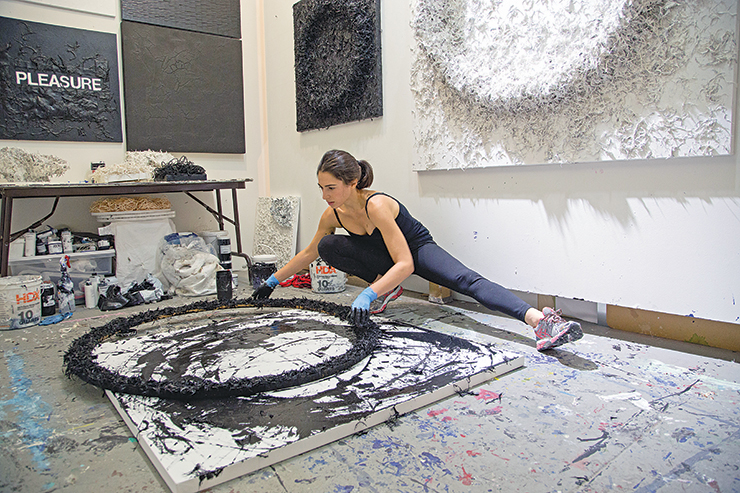
For artist Maria Fragoudaki, art has always been a delicate balance of chemical reactions. “Chemistry and art are very much related,” she explains over Skype from her Athens studio, in preparation for a September solo show at the Jewish Museum of Greece. “You don’t mix oil with acrylic; you can put oil on acrylic, but if you turn them around, it doesn’t work.”
Despite a deep love of painting from a young age, citing early infatuations with the likes of Gerhard Richter and Joan Miró, Fragoudaki fed her fascination with mixing materials by studying chemistry, not art.
Her studies led to a two-year stint in London working in a pharmaceutical company by day and painting diligently at night. “I hadn’t thought to do art as a job,” she says, until Skoufa Gallery in Athens mounted a solo show of her paintings in 2011, a major turning point in her career. “It was all abstract paintings, very much about the use of color, and it was successful,” she recalls. “It gave me that extra push to leave my day job behind.”

Soon after, Fragoudaki quit her job and moved to New York, where a new set of influences—including seminars at NYU and Parsons, and three residencies at the School of Visual Arts—took hold, fundamentally changing the direction of her work. Under the mentorship of Gregory Coates, she gravitated towards process art, a movement born in the 1960s that values the act of creating art over the end product. “I don’t impose a form,” she says. “It emerges from my process and the interaction of my materials,” which could include a hardware tool propped against a painting, à la Richard Serra’s carefully balanced sculptures, or feathers, pigments, strings or bicycle tire inner tubes.
Following her work’s evolutionary progression from flat painting to prop sets to sculpture, she’s now exploring the addition of a living material—herself, setting her work in motion in the form of dance choreographed alongside her artworks. This, she acknowledges, is a far cry from her initial show of abstract paintings. “After that first exhibition,” she says, “I never used a brush again.”

Today, Fragoudaki has shown internationally, from New York’s Sikkema Jenkins & Co. to Scope Art Fair, and at Aegeanale, a fair that takes place annually on a series of islands in the Aegean Sea. While she returns home often, her practice is firmly based in New York. “In Greece, I find major inspiration from the light and the sea,” she says, “but in New York I feel so much energy that I don’t feel anywhere else.” For Fragoudaki, she and New York just have a better chemistry.



